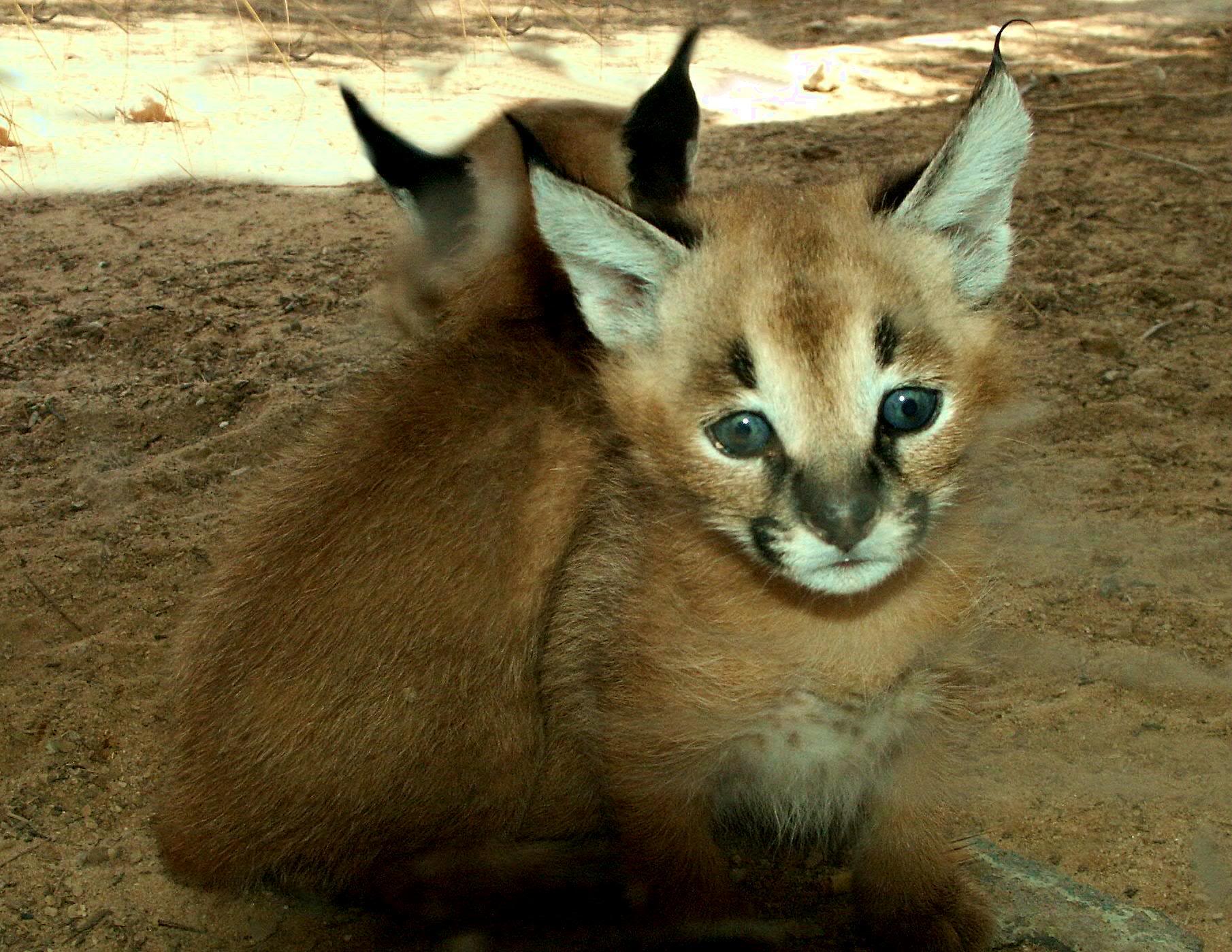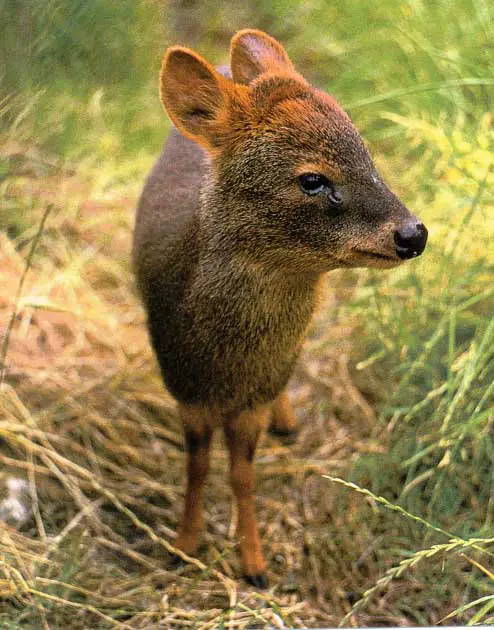Caracal
Caracal, also called the African or the desert lynx, is a long-legged, slender predator that lives in arid regions. These cats can easily be recognized by their soft, sandy fur and emphatic, long black hairs that end their ears. The word “Caracal” in turkish means “black ear”, also emphasizing on this animal’s unique decoration.
Caracals live in open territories all over Africa, except the Sahara desert and equatorial rainforests. They also inhabit the Arabian Peninsula, Little Asia, Turkmenistan and India. They prefer rocky, bushy territories as well as arid, grassy steppes. Unlike many other lynx, the Caracals don’t feel comfortable in humid, dense forests.
This predatory cat reaches a size of 55 – 80 cm on average and a weight of 16 – 23 kg. Colouration of the fur depends on the area they inhabit, but these cats are mostly sandy to red-brown, while the underside is white. Strangely for a creature that lives so close to the equator, the Caracal has very thick fur which helps them conserve heat at night. The most notable detail of their appearance is their ears – they are slightly elongated and they end with distinctive black plumage.
The Caracal is a very capable hunter that lead solitary lives, hunting at night. They roam large territories in search of prey, relying on their incredible vision and hearing to notice other creatures from great distances. They feed on various animals, including monkeys, birds, rodents, lizards and even newborn antilopes. The Caracal uses cunning strategies when hunting, usually ambushing unsuspecting animals and killing them quickly with a bite to the neck. Being extremely agile, these wild cats can surprise low-flying birds by jumping up to 2 m high.
Being solitary animals, the Caracals only meet other individuals in the mating period, the time of which is different for each subspecies. After 10-11 weeks two to three kits are given birth and are sheltered in a cave which they don’t leave for about ten days. In four to five weeks they become increasingly playful and often leave the cave and they start hunting for themselves when they are two months old, however, they stay with their mother for at least the next ten months. Sexual maturity is reached in 6 – 24 months, different to each subspecies, while their lifespan reaches up to 17 years.
Caracal population doesn’t seem to be decreasing, although they are hunted in many regions for the fur and to prevent them from preying on livestock. Their numbers seem to be stable, but the Caracal caracal michaelis subspecies that inhabit Turkmenistan is very rare and therefore considered endangered. Currently, there are no plans in regards to conservation of these desert predators.





What a noble little guy. Very pretty.